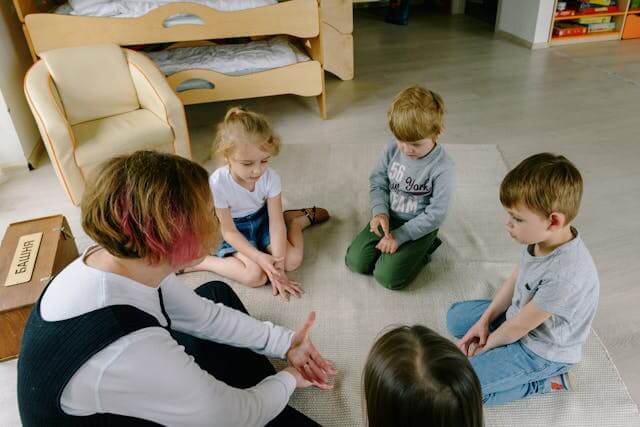From Screen Time to Story Time: Using Imagination to Build Problem-Solving Skills
In today’s device-centered world, it has become increasingly important to help our children step away from the “screens” and nurture creativity and problem-solving skills in their young minds. It’s becoming increasingly important to ignite their imaginations to rediscover and see their world in new ways; to show them how “thinking outside the box” can be a fun and useful tool for self-expression and finding solutions to obstacles and challenges they may meet along the way.
Children’s literature presents a playground of opportunities to explore, practice, and help develop creative thinking skills and imagination in children. The colorful and detailed illustrations and playful language found in picture books provide visual and auditory cues that indeed ignite their imaginations, prompting them to create their own interpretations of a story and/or alternative scenarios. Their natural curiosity makes them eager to predict what will happen next, how a problem might be solved, or how a story will wrap up and end.
Books introduce children to diverse characters, cultures, situations, and perspectives, broadening their worldview. This exposure helps them develop empathy and understanding for others who are different from themselves, further sparking their imagination and creativity.
Through a book’s characters, children also experience a wide range of emotions. Exploring the characters’ emotions helps children become more aware of their own. Creativity and emotional intelligence are deeply connected, fostering resilience and adaptability.
Stories also present characters facing challenges, obstacles, and dilemmas. Observing how the characters in a story approach these prompts, meaningful discussion, and inviting children to think critically to find solutions. What did a character do when one solution they tried didn’t work? With a successful solution, did the use of creative problem-solving contribute to their success?
This process of imaginative problem-solving further hones children’s creative thinking abilities and transfers them into real-life situations where creative thinking can be used to solve problems.
Encouraging Creative Thinking
Creative thinking, often referred to as “thinking outside the box,” is simply the ability to generate new and valuable ideas. Thinking outside the box is thinking unconventionally or from a new perspective.
To introduce this concept, a simple and literal ‘thinking outside the box’ activity to do with children is called “Transformations”. Crease a blank sheet of paper into quarters. Draw a square in the first quarter, a triangle in the second, a circle in the third, and a curvy line in the fourth.
Using your imagination, think about what each of your plain drawings can be transformed into by adding details. Perhaps add some colorful balloons to the face of the square, a bow to the top, and a gift tag. What did you create?
This is a ‘thinking outside the box’ I routinely used in my classroom, and kids were always so excited and proud to share the unique transformations they created! Any combination of shapes can be used or create a whole sheet of the same shape (e.g., ovals) as a challenge to how many diverse transformations can be created from the same shape.
Problem-Solving through Play
Imaginative, or pretend play, is also effective at building creative thinking muscles. Additionally, it builds vocabulary and communication skills. Examples of this might include role-play (teacher, vet, astronaut), acting out scenarios (playing superhero with a friend), and having a conversational picnic with toys or Stuffies.
While children are engaged in imaginative play, ask thoughtful, open-ended questions about what is happening.
Provide a safe environment for them to express themselves. Provide or create props with them to support their imaginative vision.
Practical Applications for Parents and Educators
Creating their own stories, poems, and other forms of creative expression is a valuable activity for building creativity and imagination in children. Within the creative process itself, there are a variety of choices, decisions, and plans to be made.
However, there are several engaging storytelling activities for kids to build these skills as well.
- Puppet Shows: Whether purchased or created, these characters in disguise have a story to tell! Write the story together and create a “theatre” for the show. (Remember the popcorn for the audience!)
- Make a Story Box: Children create a story based on all of the items that are in the box.
- Story Stones: Decorate smooth stones with pictures or stickers. Choose a stone at random from a bag. Work with your child to create a story based on the visual.
- Family Circle Stories: A family member verbally begins a story “Once, Once Upon a Time, One day”, etc). Then each member of the family verbally adds-on to the story to keep it going until an agreed-upon end.
Using children’s literature to teach creative problem-solving fosters a lifelong love for learning and desire to discover new things. It builds self-esteem, social skills, and inspires a child’s imagination to soar. And, with a masterful imagination, anything is possible.
ABOUT THE AUTHOR
Terri Lilga, a native of Western New York, lives in a Buffalo suburb with her husband, Pete, and their lively mini-golden doodle, Sushi. Following a rewarding career as an elementary school teacher, Terri pursued her passion for writing children’s literature. There’s a Hubbard in My Cupboard is her second children’s book, following the release of Santa’s Simon in 2023. Her stories reflect her love of imagination, learning, and fostering growth in young minds.
Photo By Ksenia Chernaya

